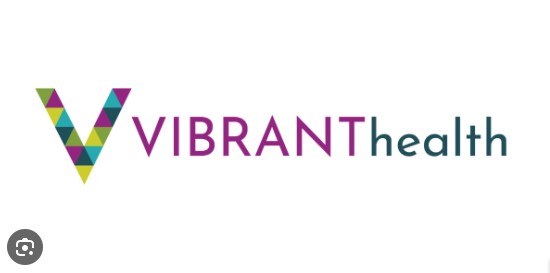Breast augmentation, also known as augmentation mammoplasty, is a surgical procedure designed to enhance the size and shape of a woman’s breasts. It is one of the most commonly performed cosmetic surgeries worldwide, with thousands of women opting for it each year. While breast augmentation in Dubai is primarily sought for aesthetic reasons, it can also be done for reconstructive purposes following mastectomy or other breast-related surgeries.
Introduction to Breast Augmentation
Breast augmentation holds significant importance in the realm of cosmetic surgery. Many women seek this procedure to enhance their appearance, boost their self-confidence, or achieve better symmetry between their breasts. Whether it’s to restore lost volume after pregnancy and breastfeeding or to address congenital asymmetry, breast augmentation offers a solution for various aesthetic concerns.
Understanding the Science Behind Breast Augmentation
Breast augmentation involves the placement of implants to increase the size or improve the shape of the breasts. These implants are typically made of silicone gel or saline solution and come in various shapes, sizes, and textures. The surgical procedure for breast augmentation requires meticulous planning and execution to ensure optimal results and minimize risks.
Types of Implants
There are two main types of implants used in breast augmentation: silicone and saline. Silicone implants consist of a silicone outer shell filled with silicone gel, providing a natural look and feel. Saline implants, on the other hand, are filled with a sterile saline solution, offering adjustable volume and a firmer feel.
Surgical Techniques Involved
The surgical technique for breast augmentation may vary depending on factors such as the patient’s anatomy, desired outcome, and surgeon’s preference. Common incision options include inframammary (under the breast fold), periareolar (around the nipple), and transaxillary (in the armpit). The choice of incision placement is determined by factors such as scarring concerns and implant size.
Preparation for Breast Augmentation Surgery
Before undergoing breast augmentation surgery, patients must undergo a thorough consultation with a board-certified plastic surgeon. During this consultation, the surgeon will evaluate the patient’s medical history, perform a physical examination, and discuss their goals and expectations for the procedure. Additionally, patients will receive detailed instructions on how to prepare for surgery, including guidelines for medication, diet, and lifestyle modifications.
Decision-making Process for Implant Size and Type
Choosing the right implant size and type is a crucial decision that requires careful consideration and discussion between the patient and the surgeon. Factors such as body proportions, skin elasticity, and desired outcome will influence this decision. The surgeon will provide recommendations based on their expertise and the patient’s preferences, ensuring a personalized approach to breast augmentation.
The Surgical Procedure
Breast augmentation surgery is typically performed under general anesthesia to ensure patient comfort and safety. Once the patient is sedated, the surgeon will make the predetermined incisions and create a pocket either behind the breast tissue or beneath the chest muscle. The chosen implants are then inserted into the pockets, positioned carefully to achieve the desired outcome. After confirming proper placement and symmetry, the incisions are closed using sutures or surgical tape.
Recovery Process
Following breast augmentation surgery, patients will experience some degree of discomfort, swelling, and bruising, which is normal and expected. To promote healing and minimize complications, patients are advised to follow post-operative care instructions provided by their surgeon. This may include wearing a supportive bra, avoiding strenuous activities, and taking prescribed medications as directed. Most patients can resume normal activities within a few weeks, although strenuous exercise should be avoided for several weeks to allow for proper healing.
Potential Complications and How to Manage Them
While breast augmentation surgery is generally safe, it carries inherent risks like any surgical procedure. Common complications may include infection, bleeding, implant rupture, and changes in nipple sensation. It is essential for patients to be aware of these risks and to promptly report any unusual symptoms to their surgeon. By closely following post-operative instructions and attending follow-up appointments, patients can minimize the risk of complications and achieve optimal results.
Long-Term Results and Maintenance
Breast augmentation surgery can provide long-lasting results, but it’s important to understand that implants are not lifetime devices and may require replacement or removal at some point. Regular monitoring of breast health through self-exams and routine mammograms is recommended to detect any changes or abnormalities. Additionally, patients should be prepared for the possibility of future surgeries to address issues such as implant deflation, capsular contracture, or changes in aesthetic preferences.
Costs and Insurance Coverage
The cost of breast augmentation surgery can vary widely depending on factors such as geographic location, surgeon’s experience, facility fees, and type of implants used. Since breast augmentation is considered a cosmetic procedure, it is typically not covered by health insurance unless it is performed for reconstructive purposes following mastectomy or other medical conditions. However, some financing options may be available to help patients manage the cost of surgery, such as payment plans or medical loans.
Common Myths and Misconceptions
Breast augmentation surgery is often surrounded by myths and misconceptions that can create confusion and misinformation. One common myth is that breast implants need to be replaced every ten years, which is not necessarily true. While implants may have a lifespan, there is no predetermined expiration date, and they may last longer or shorter depending on individual factors. By debunking these myths with accurate information and scientific evidence, patients can make more informed decisions about breast augmentation.
Emotional and Psychological Considerations
In addition to the physical changes, breast augmentation surgery can have significant emotional and psychological implications for patients. Many women report increased self-confidence and improved body image following surgery, but it’s essential to recognize that these changes may not be immediate or universal. Some patients may experience temporary feelings of anxiety, depression, or body dysmorphia, which should be addressed with the support of mental health professionals or support groups.
Choosing a Qualified Surgeon
Selecting a qualified and experienced plastic surgeon is paramount to achieving safe and satisfactory results with breast augmentation surgery. Patients should thoroughly research potential surgeons, ensuring they are board-certified and have a track record of successful outcomes. During consultations, patients should ask questions about the surgeon’s experience, surgical techniques, and facility accreditation to make an informed decision.
Ethical and Cultural Perspectives
The decision to undergo breast augmentation surgery is deeply personal and influenced by cultural norms, societal expectations, and individual values. While cosmetic surgery is generally accepted in many societies, ethical considerations arise regarding body autonomy, beauty standards, and the medicalization of appearance. It’s essential to approach breast augmentation with sensitivity and respect for each patient’s unique circumstances and cultural background.
Future Trends and Innovations
Advancements in technology and surgical techniques continue to shape the field of breast augmentation, offering patients new options and improved outcomes. From customizable implants to minimally invasive procedures, the future of breast augmentation holds promise for safer, more natural-looking results. Emerging technologies such as 3D imaging and virtual reality simulations allow patients to visualize their potential outcomes and make more informed decisions about surgery.
Case Studies and Patient Experiences
Real-life stories of individuals who have undergone breast augmentation can provide valuable insight into the decision-making process, surgical experience, and long-term outcomes. By sharing their experiences, patients can offer support, encouragement, and practical advice to others considering breast augmentation. These case studies highlight the diverse motivations, expectations, and results associated with breast augmentation surgery, emphasizing the importance of personalized care and informed decision-making.
Risks and Complications
While breast augmentation surgery is generally safe, it is not without risks and potential complications. Common risks include infection, bleeding, implant rupture, capsular contracture, and changes in nipple sensation. It’s essential for patients to be aware of these risks and to discuss them thoroughly with their surgeon before undergoing surgery. By following pre-operative and post-operative instructions and attending regular follow-up appointments, patients can minimize the risk of complications and achieve optimal results.
Conclusion
Breast augmentation surgery offers women the opportunity to enhance their appearance, boost their self-confidence, and achieve a more proportionate silhouette. By understanding the science behind breast augmentation and considering the various factors involved, patients can make informed decisions about whether this procedure is right for them. With proper preparation, skilled surgical technique, and attentive post-operative care, breast augmentation can yield satisfying and long-lasting results for many patients.
FAQs (Frequently Asked Questions)
-
How long does breast augmentation surgery take?
- The duration of breast augmentation surgery varies depending on factors such as the surgical technique used, implant placement, and any additional procedures performed. On average, the procedure takes approximately one to two hours to complete.
-
What is the recovery like after breast augmentation surgery?
- Recovery from breast augmentation surgery typically involves some degree of discomfort, swelling, and bruising, which gradually subsides over the following weeks. Patients are advised to avoid strenuous activities and follow post-operative care instructions provided by their surgeon to promote healing and minimize complications.
-
Are breast implants safe?
- Silicone and saline breast implants have been extensively studied and deemed safe for use in breast augmentation surgery by regulatory authorities such as the FDA. However, like any medical device, breast implants carry inherent risks, and patients should be aware of potential complications and discuss them with their surgeon before undergoing surgery.
-
How long do breast implants last?
- While breast implants are not considered lifetime devices, they can last for many years without requiring replacement. The lifespan of breast implants varies depending on factors such as implant type, patient age, and lifestyle factors. Some implants may need to be replaced or removed due to issues such as implant rupture, capsular contracture, or changes in aesthetic preferences.
-
What are the alternatives to breast augmentation surgery?
- Non-surgical alternatives to breast augmentation surgery include fat transfer procedures, which involve transferring fat from one area of the body to the breasts to increase volume. However, these alternatives may not be suitable for all patients and may not achieve the same results as traditional breast augmentation surgery.















